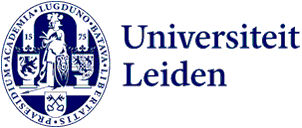Evaluating and improving
Evaluation is an important instrument in revealing, monitoring and improving the quality of your teaching.
Go directly to:
- Interim evaluation
- Evaluation at the end of your course
- Evaluating assessment
- Follow-up to evaluation
When you think of teaching evaluation, your first idea will probably be the student questionnaires at the end of a course. But don’t forget that interim evaluation moments, self-evaluation and feedback from colleagues can also help you retain what’s going well and make improvements where possible.
1. Interim evaluation
Interim evaluation offers you the opportunity to make changes in an ongoing course and to involve students more actively in the learning process. Make sure the evaluation focuses on points you can actually change while the course is still running.
Student feedback
You can choose the timing and method of the interim evaluation yourself. For example, it can be oral or written, individual or in groups; and an evaluation moment can be helpful at the midpoint of a series of lectures, or after a session where you tried out a new teaching format.
Remember the following points when you ask students for interim feedback:
- The learning climate should be open and safe, with an emphasis on respect for one another.
- Explain why the evaluation is important. Show students what you’ve done with feedback from previous evaluations.
- Discuss how students can give feedback respectfully and constructively (to you and to each other).
- Encourage students to share their concerns or suggestions for improvement, and explain how you will process this feedback.
- Make the evaluation concrete and specific.
More tips
- Wooclap is a handy tool for quickly collecting feedback during a teaching moment.
- You can also use the Surveys feature in Brightspace.
Interim assessments
Interim assessments (formative or summative) also constitute an evaluation moment: they give you insight into how much the students have learned and hence how effective your teaching is.
Feedback from colleagues
Experienced colleagues can be very valuable for evaluating your teaching. Consider discussing experiences, teaching material or interim evaluation results with another teacher, or ask a colleague to observe a lecture or tutorial, for example if you’ve developed a new teaching format and would like some feedback on it.
2. Evaluation at the end of your course
You don’t have to organise the evaluation at the end of a course yourself; this is done by the programme committee in conjunction with the student administration. These evaluations are largely standardised, making use of the same questions faculty-wide. Open-ended questions are recommended normally for courses with smaller numbers of students, while closed questions are often used for larger groups. Although digital evaluations have become more common, paper evaluations are still used, in view of their higher response rate.
More information on course evaluations and the questionnaires used can be found in Chapter 2 and Appendix 1 of the Teaching Evaluation Framework of the Faculty of Humanities.
Not all courses are evaluated every year. The programme committee has an important role in deciding which courses will be evaluated. If you’re following a University Teaching Qualification (UTQ/BKO) track, your courses will always be evaluated.
The Education Administration Office will give you timely notice if your course is going to be evaluated during a contact hour, for both paper and digital evaluations. See also the logistic procedure for course evaluation.
You should encourage your students to fill in the evaluation, by explaining why the results are important. As the teacher, you have an important role in increasing the response rate.
3. Evaluating assessment
For information on evaluating the assessment, see: Evaluating and improving assessment.
4. Follow-up to evaluation
Evaluation is only really useful if you actually do something with the results. This is true for both formal course evaluations at the end of the course and for interim evaluations that you organise yourself.
Quite soon after the official course evaluation, you will receive an evaluation report. This report is also sent to the programme committee, which discusses it and contacts you if it has any questions or would like to give some advice. You should analyse the results promptly after receiving the report, so that you can use them for the next version of your course or for your general development as a teacher. If you have questions about the evaluation, speak with your students about them. For example, you could invite them to a short panel discussion on possible improvements. Remember that evaluation scores aren’t always entirely reliable, especially if the response rate was low; and also that student satisfaction is not the same as teaching quality, but just one of its indicators.
Make notes of your analysis and take them into account when preparing a subsequent course. You could discuss intended changes with a colleague, if you wish. Tell future groups of students what changes you made on the basis of previous evaluations, for example by briefly mentioning them in the syllabus. This will help motivate your students to also give constructive feedback in the future.
